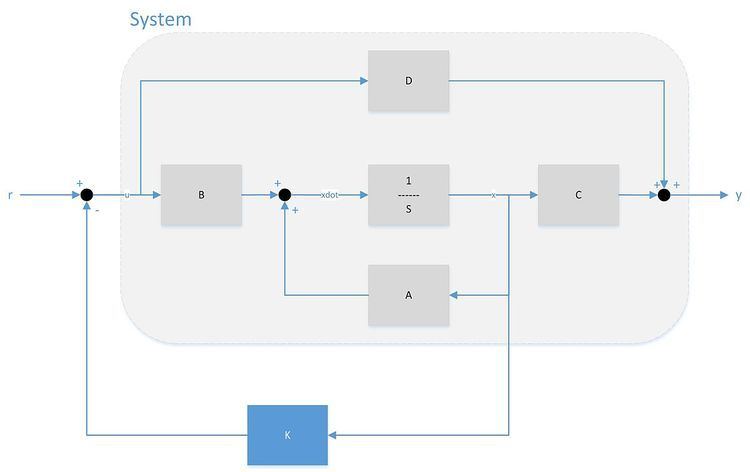 | ||
Full state feedback (FSF), or pole placement, is a method employed in feedback control system theory to place the closed-loop poles of a plant in pre-determined locations in the s-plane. Placing poles is desirable because the location of the poles corresponds directly to the eigenvalues of the system, which control the characteristics of the response of the system. The system must be considered controllable in order to implement this method. This technique is widely used in systems with multiple inputs and multiple outputs, as in active suspension systems.
Contents
Principle
If the closed-loop input-output transfer function can be represented by the state space equation (see State space (controls))
with output equation
then the poles of the system are the roots of the characteristic equation given by
Full state feedback is utilized by commanding the input vector
Substituting into the state space equations above,
The roots of the FSF system are given by the characteristic equation,
Example of FSF
Consider a control system given by the following state space equations
The uncontrolled system has closed-loop poles at
Following the procedure given above,
Upon setting this characteristic equation equal to the desired characteristic equation, we find
Therefore, setting
This only works for Single-Input systems. Multiple input systems will have a K matrix that is not unique. Choosing, therefore, the best K values is not trivial. A linear-quadratic regulator might be used for such applications.
